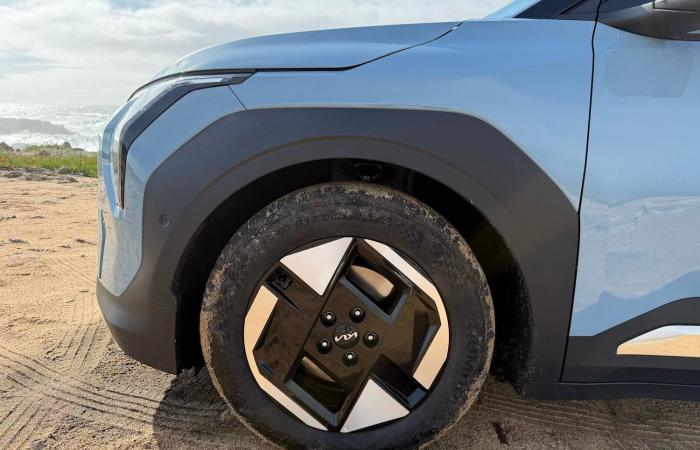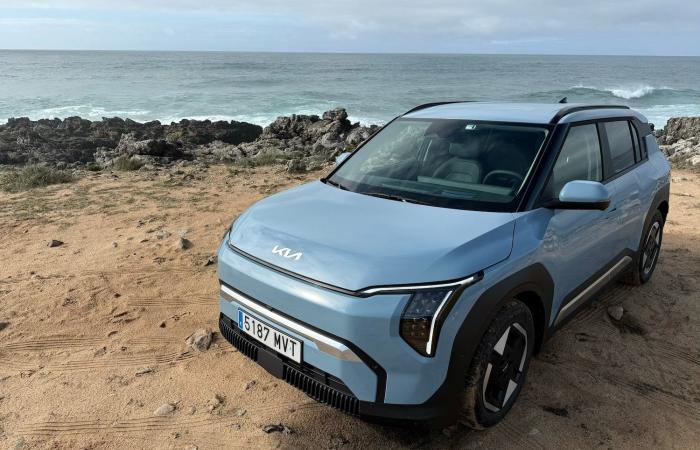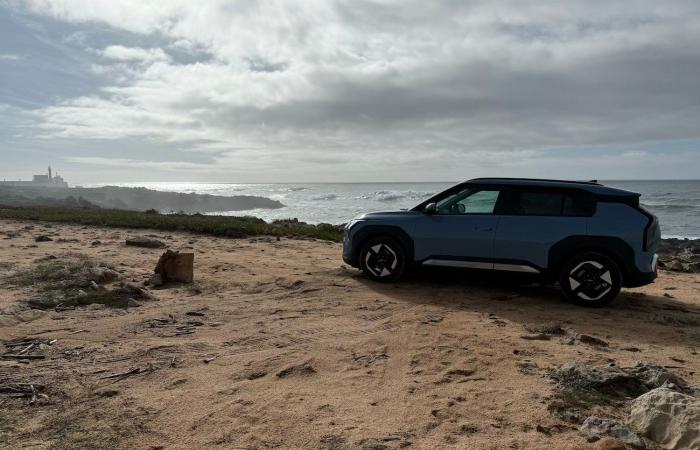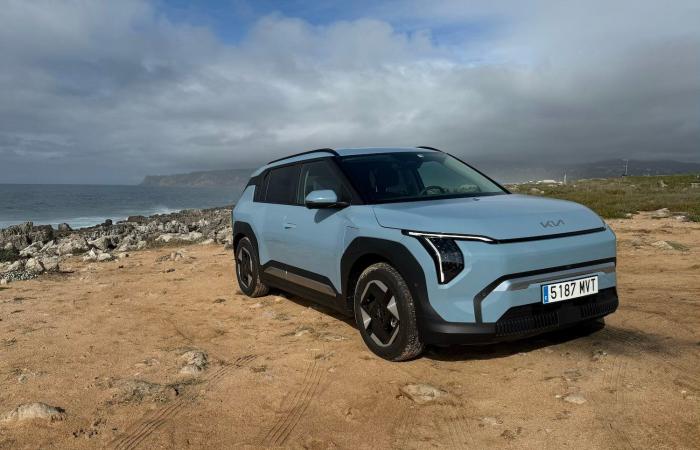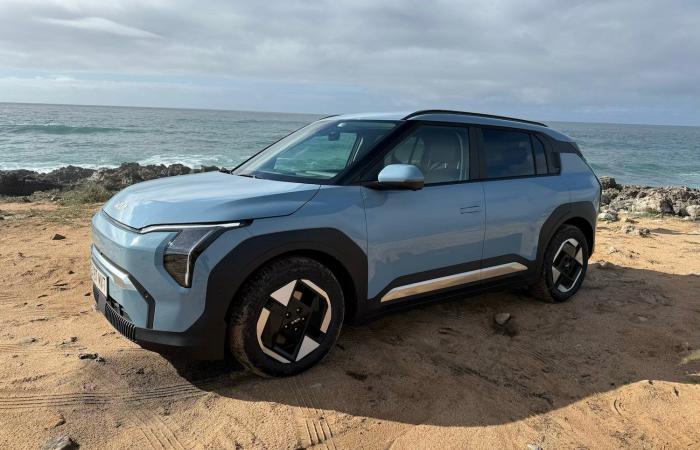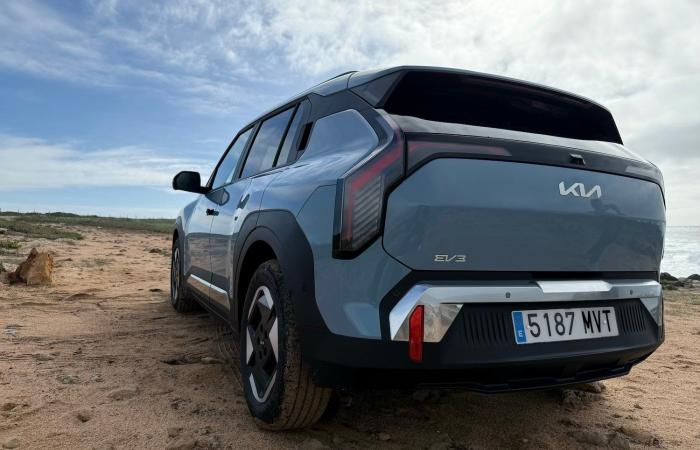The new generation of Kia SUVs is not riding on the power of the 800V platform that made the EV6 and EV9 successful. To offer more affordable electric SUVs, the Korean manufacturer has chosen to return to a 400V architecture. The Kia EV3 is the first incarnation of this strategic shift before a Kia EV4 and EV5 which should appear in 2025.
Our review of the Kia EV3 in video
Slightly smaller than the Niro, barely larger than a Renault Mégane E-Tech, this EV3 plays on an ambiguity. With its 4.30 m long, it remains confined to segment B, but it is certainly one of the largest in its category. And for good reason, with this EV3, Kia is targeting nothing other than families. Those who can be satisfied with their living space and those who do not wish to exceed 40,000 euros for the purchase of their electric car. It is on this in-between that Kia has chosen to position its new SUV. But why did the manufacturer choose to cover its tracks? To better hide the flaws of your SUV or to conquer audiences of all stripes?
The Niro's little brother could prove to be one of the most interesting small electric SUVs on the market. The reason? Its many qualities, of course, but above all a really attractive price. Be careful, we are staying on an electric model, so the entry ticket is above 30,000 euros (34,990 euros precisely), but if we look at the competition and the market, the EV3 seems very well positioned . An example: compared to the electric Niro that it accompanies, the EV3 is 10,000 euros cheaper… without being much smaller.
We were able to take the wheel of this Kia EV3 on the Portuguese roads around Lisbon. A trip of around 200 km is enough to form a fairly clear first opinion on this opportunistic SUV. Here is the test of the Kia EV3.
Design: don't call it baby EV9 (but a little anyway)
We will not dwell more than necessary on the aesthetic aspect of this EV3. And for good reason, we did it at length and in video during the officialization of this reduced-sized baby EV9. To get a complete overview of what has been done in terms of design, we invite you to reread our first discovery of the Kia EV3:
If we had to remember only one thing from the aesthetic aspect, apart from the resemblance with its big brother, it is the work that was carried out by the Kia teams to improve the aerodynamics of the vehicle. Far from being a cakewalk on an SUV due to its size and unhelpful shapes, the work done on the EV3 is remarkable. With a Cd of 0.26, the Kia SUV stands out in its category. This result is due to its overall design, of course, but also to a front slightly wider than the rear and solid rims, a priori very effective. This is evidenced by the 600 km of autonomy announced by the manufacturer.

On board the Kia EV3: triple screen and great comfort
Neat and well finished, the EV3's interior stands out in another aspect: its general comfort. The space available in the front and rear seats is quite substantial and initially allows you to feel comfortable. We will even go so far as to recline the driver and passenger seats almost completely (if no one is in the back) to take advantage of the 12.3-inch screen on which the brand offers numerous multimedia content, Netflix or YouTube for video, Spotify for music… while waiting for a future integration of ChatGPT via an update. Why so much effort? Quite simply to compensate for recharge times which are not really the strong point of our topic of the day.

The dashboard, inherited from the EV9, adds a distinctive touch: a third 5.3-inch screen between the instrument screen and the central screen. This small display has only one use: to provide information on the temperature on board and the air conditioning in the cabin. In fact, it is not very visible on the driver's side, because it is often obstructed by the steering wheel. As for its capabilities, they are also very limited. Rather pretty in appearance, it is therefore quite useless in reality. Quite the opposite of the small central console between the two seats which serves as a side table when the car is stationary.
What does the Kia EV3 look like on the road?
The EV3 is a family SUV, and it shows in the way it drives. Nothing unusual in that the latest Kia is aimed at small families or young couples, but it's a fact: it's a vehicle focused more on comfort than performance. That being said, we would still have appreciated more sensitive steering and brake pedal. On braking, Kia does offer a more aggressive “Sport” mode, but it was not available on our test model.

As is often the case with family electric vehicles, performance is not only measured on the road, it is also measured in terms of consumption. The game then consists of extending the autonomy of your battery as much as possible and adopting the most efficient driving possible. In this aspect, the EV3 offers a few more advantages compared to many of its competitors. Eco-driving then becomes an essential and particularly pleasant aspect.
In addition to the classic recovery levels, to be adjusted with the two paddles on the steering wheel, Kia has innovated on an essential aspect: the e-Pedal or monopedal. On most electric car models, this mode allows you to do without the brake pedal and to control your vehicle only with the accelerator pedal. By releasing it, the vehicle brakes and can come to a stop. On the EV3, Kia gives the driver even more options. This can choose the behavior of the single-pedal mode and the level of braking applied. It's smart and very practical, and it's a boon for autonomy.
Autonomy: the new leader in the category
Therefore, we should not be surprised by the remarkable performance of the EV3 in terms of autonomy. On the high-end version of our test, the one equipped with the large 81.4 kWh battery announced for 564 km of autonomy, we obtained consumption that was simply astonishing. Less than 12 kWh/100 in the city, less than 20 kWh/100 km on the highway and a gratifying 15.8 kWh/100 km on our test route mixing all types of roads with a majority of secondary network.

What about recharging?
Limited to a 400V platform, the EV3 could not claim the extraordinary capabilities of the EV6 and the EV9 in terms of fast charging. But even knowing this, we can only be slightly disappointed with its peak charging power, of only 120 kW. This remains below average compared to the competition and appears to be one of the few weak points of the model. Of course, all this is theoretical, a low power peak can be largely compensated by a good recharge curve. Unfortunately, the limited time of our test did not allow us to carry out several rapid charges, the only way to see the real performance of the EV3 in DC charging. At Kia, we of course say that the charging curve is very good and we want to believe them, especially when we look at the history of charging in the Hyundai/Kia group. But only a test in real conditions will allow us to confirm these assertions.
In any case, on our model equipped with the 81.4 kWh battery, it would take no less than 30 minutes to go from 20 to 80% battery. Unfortunately for it, the version equipped with the “small battery” is also more limited in charging power with a cap of 100 kW.
The EV3 versus the competition: the best quality/price ratio in the category?
Larger than the small SUVs of the B segment, barely smaller than the first SUVs of the C segment, the EV3 really plays between the two categories and finds itself, in theory, with a large number of competitors. The most notable are Renault's two electric SUVs. If the Mégane E-Tech seems its natural competitor, the EV3 can also compete with the Scénic, although larger, particularly in terms of autonomy. Moreover, if it offers the best autonomy in its segment, it is also better than a good part of the representatives of the C segment. In this sense, the EV3 is a vehicle apart, which manages to shine as well by its attractive price, as well as its remarkable autonomous performance.
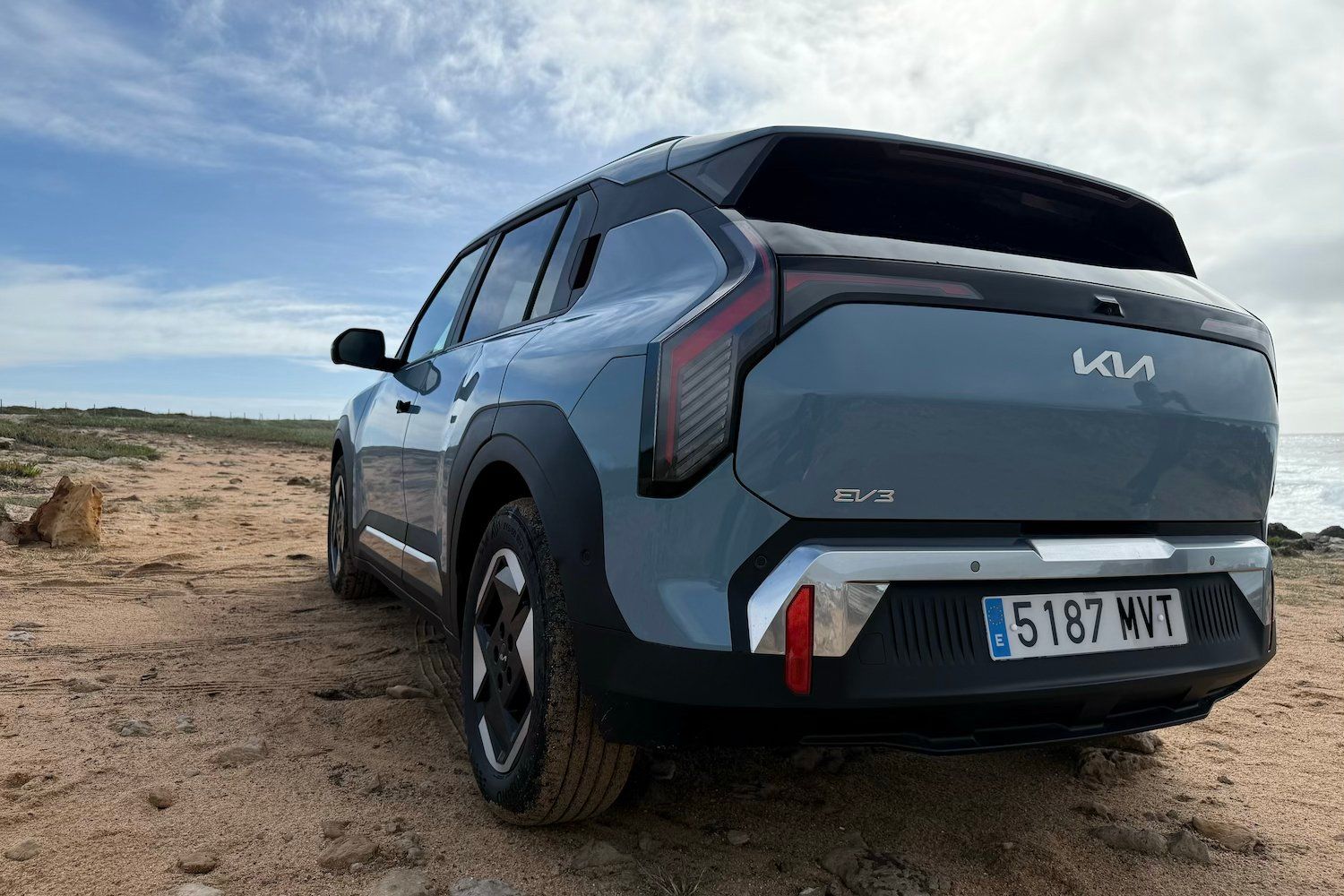
Results of the test:
The baby EV9 should not remain in the shadow of its big brother for long. The EV3 has many advantages to establish itself as one of the best electric SUVs of 2024/25, even though it cannot claim the ecological bonus of 4,000 euros. This is undoubtedly Kia's main success. Having managed to offer a successful model in many aspects, very efficient in terms of autonomy and at a price similar to or lower than its main competitors (including some in the higher segment). The EV3 not only has the arguments to attract the customers it naturally targets, but also some who would come from the C segment.
???? To not miss any news from 01net, follow us on Google News and WhatsApp.


